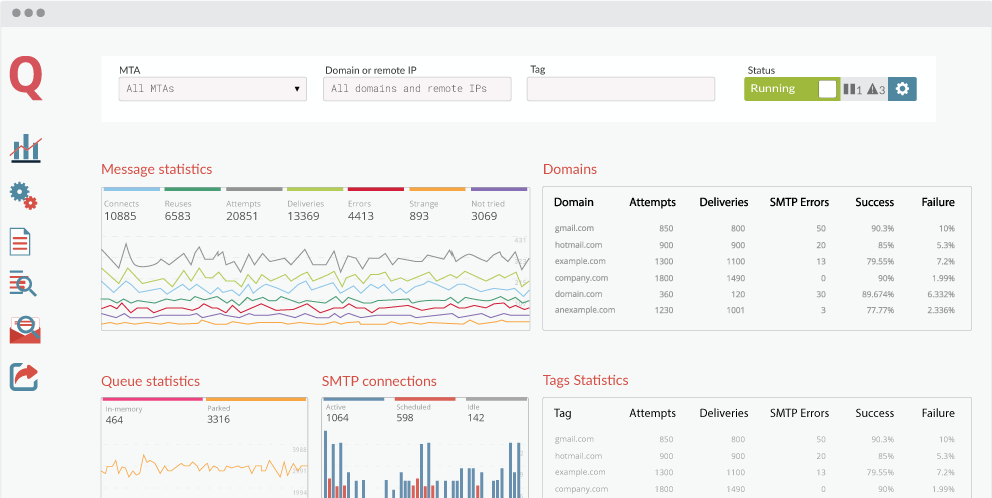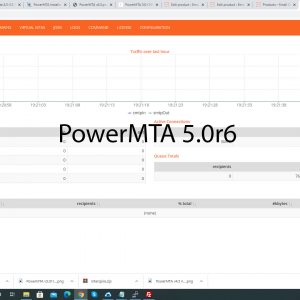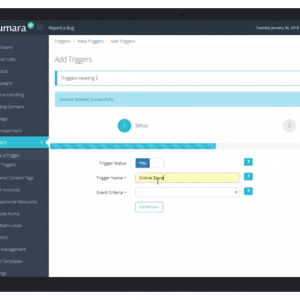15 Days Free Support On Installation and Troubleshooting
MailerQ comes packed with features right out of the box to improve your email deliverability.












Define delivery rates using email throttling
Using Email throttling, you can specify the number of connections and delivery rates for specific combinations of source IP and target domain. Examples of capacities that can be set here are messages per minute, new connections per minute, bytes per minute, the maximum number of active simultaneous connections, timeouts throughout the SMTP handshake and much more. These rules will automatically apply to all target domains with matching MX records.
Adapt MTA behaviour using response patterns
Using Response patterns, you can adapt MTA behaviour based on server responses. You can define a trigger, being a combination of a message selection based on IP, target domain and tag, and a server response pattern (exact match, substring, wildcard or regular expression). For every trigger, you can add a suitable follow-up actions such as adding or removing IP addresses for the matching deliveries, fail or retry the delivery, adding or removing tags and changing other message properties.
Warm up IPs using email throttle schedules
Email throttle schedules allow you to create a schedule for a specific number of days describing what email throttles to use on which day. This schedule can then be applied to any combination of source IP and target domain. Again, these rules will automatically apply to all target domains with matching MX records. Typically, this feature allows for a more automated approach when warming up new IP addresses.
Reroute deliveries using rewrite rules
Rewrite rules can be used to dynamically reroute messages. To create a rewrite you need two things: a trigger and at least one action. A trigger is a combination of IP, target domain and a tag, that will say what kind of messages – such as a specific campaign that’s being delivered to a certain ISP – should trigger an action. An action tells what should MailerQ do for matching messages – this can be adding, removing or setting an IP for a specific delivery, or redirecting a message to a smarthost. Additionally, you can provide conditions, which means MailerQ will only apply the rule if for the selected message certain properties do or do not equal/contain/match specific values or patterns.





Freddy Corp –
Great